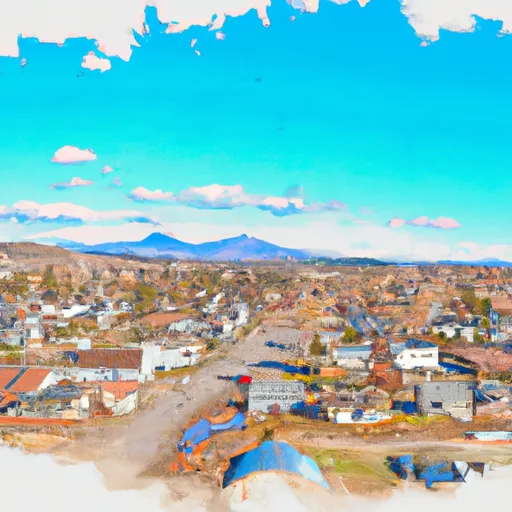-
 Snoflo Premium
Snoflo Premium
Get unlimited access to all our content
With no Ad interruptions! - Start Your Free Trial Login with existing account
Hysham
Eden Index
Climate
7.7
•
Recreation
0.3
•
Community
•
Safeguard
3.2/10

Hysham, Montana is a small town located in Treasure County. It has a semi-arid climate with four distinct seasons. Summers in Hysham are warm and dry, with average temperatures ranging from 80°F to 90°F. Winters are cold and snowy, with temperatures dropping to around 20°F. Spring and fall seasons are brief but pleasant.
Hysham is situated in an area with abundant hydrology constituents. The town lies near the Yellowstone River, offering opportunities for fishing, boating, and other water-related activities. Additionally, there are several creeks and reservoirs in the vicinity, providing further options for water recreation.
Outdoor enthusiasts will find plenty of recreational opportunities in and around Hysham. The surrounding area offers remarkable opportunities for hiking, biking, and wildlife viewing. The nearby Custer National Forest and the Bighorn Canyon National Recreation Area provide access to stunning landscapes, including rugged mountains and picturesque canyons. Hunting is also a popular activity, with opportunities for big game, upland birds, and waterfowl.
In summary, Hysham, Montana offers a semi-arid climate, abundant hydrology constituents, and a variety of outdoor recreation opportunities, making it an appealing destination for nature lovers and outdoor enthusiasts.
What is the Eden Index?
The Snoflo Eden Index serves as a comprehensive rating system for regions, evaluating their desirability through a holistic assessment of climate health, outdoor recreation opportunities, and natural disaster risk, acknowledging the profound impact of these factors on livability and well-being.
Climate Health Indicator (CHI): 7.7
Hysham receives approximately
353mm of rain per year,
with humidity levels near 63%
and air temperatures averaging around
8°C.
Hysham has a plant hardyness factor of
4, meaning
plants and agriculture in this region thrive during a short period during spring and early summer. Most
plants will die off during the colder winter months.
By considering the ideal temperature range, reliable water supplies, clean air, and stable seasonal rain or snowpacks, the Climate Health Indicator (CHI) underscores the significance of a healthy climate as the foundation for quality living.
A healthy climate is paramount for ensuring a high quality of life and livability in a region, fostering both physical well-being and environmental harmony. This can be characterized by ideal temperatures, reliable access to water supplies, clean air, and consistent seasonal rain or snowpacks.
Weather Forecast
Streamflow Conditions
Lower Yellowstone
Area Rivers
Lower Yellowstone
Snowpack Depths
Lower Yellowstone
Reservoir Storage Capacity
Lower Yellowstone
Groundwater Levels
Recreational Opportunity Index (ROI): 0.3
The Recreational Opportunity Index (ROI) recognizes the value of outdoor recreational options, such as parks, hiking trails, camping sites, and fishing spots, while acknowledging that climate plays a pivotal role in ensuring the comfort and consistency of these experiences.
Access to outdoor recreational opportunities, encompassing activities such as parks, hiking, camping, and fishing, is crucial for overall well-being, and the climate plays a pivotal role in enabling and enhancing these experiences, ensuring that individuals can engage in nature-based activities comfortably and consistently.
Camping Areas
| Campground | Campsites | Reservations | Toilets | Showers | Elevation |
|---|---|---|---|---|---|
| Myers Bridge FAS | 5 | 2,652 ft |
Nearby Ski Areas
Catastrophe Safeguard Index (CSI):
The Catastrophe Safeguard Index (CSI) recognizes that natural disaster risk, encompassing floods, fires, hurricanes, and tornadoes, can drastically affect safety and the overall appeal of an area.
The level of natural disaster risk in a region significantly affects safety and the overall livability, with climate change amplifying these risks by potentially increasing the frequency and intensity of events like floods, fires, hurricanes, and tornadoes, thereby posing substantial challenges to community resilience and well-being.
Community Resilience Indicator (CRI):
The Community Resilience Indicator (CRI) recognizes that education, healthcare, and socioeconomics are crucial to the well-being of a region. The CRI acknowledges the profound impact of these elements on residents' overall quality of life. By evaluating educational resources, healthcare accessibility, and economic inclusivity, the index captures the essential aspects that contribute to a thriving community, fostering resident satisfaction, equity, and social cohesion.

